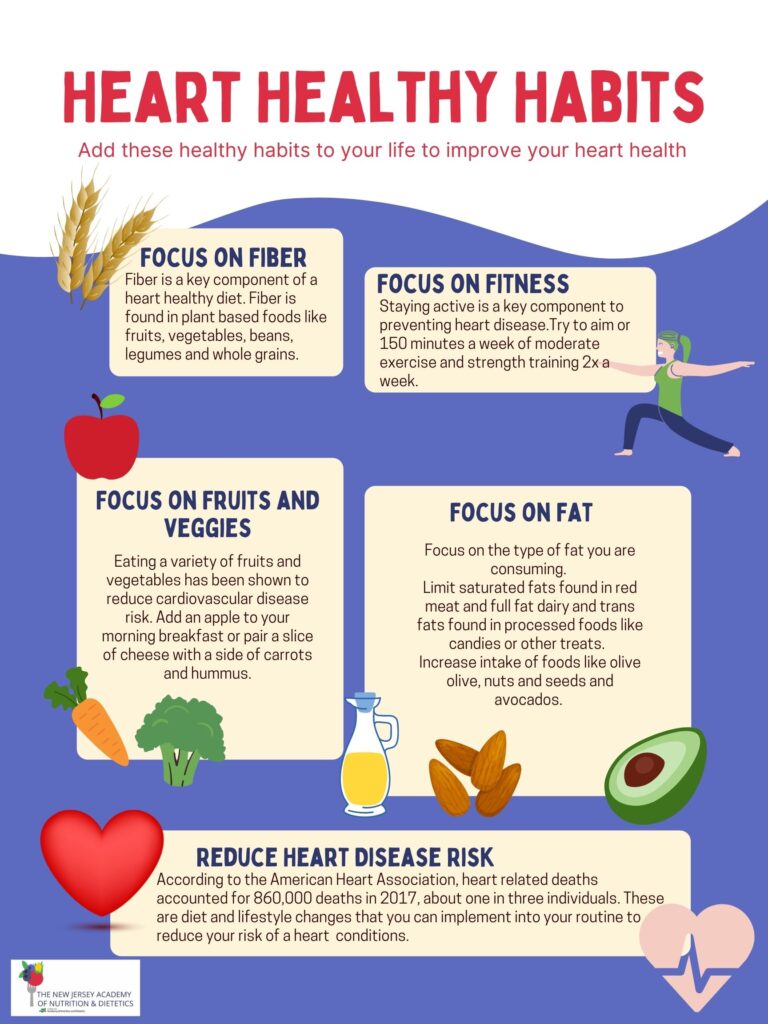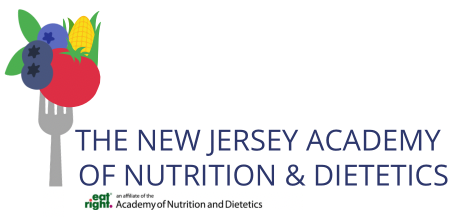By Alyssa Smolen

It’s February and while it’s generally associated with Valentine’s Day. A month filled with telling those you love, how much they mean to you through tasty treats and small gifts of endearment. But it’s no coincidence that February is also American Heart Month!
According to the American Heart Association, heart related deaths accounted for 860,000 deaths in 2017, about one in three individuals. This refers to any disease of the heart or blood vessels. Even though some disorders and conditions have a genetic component, there are diet and lifestyle changes that you can implement into your routine to reduce your risk of a heart related cardiac event.
Areas of Focus:
- Focus on Fiber: Fiber is a key component of a heart healthy diet. Fiber is found in plant based foods like fruits, vegetables, beans, legumes and whole grains. Whole grains contain the entire grain, the bran, germ and endosperm meaning it contains all the fiber, vitamins and minerals as opposed to enriched wheat fiber grains.
Sources of whole grains include farro, barely and quinoa. To increase your whole grain and fiber consumption this month, try swapping white rice for quinoa a few times a week or adding oatmeal into your breakfast rotation To make an oatmeal bowl even more fiber filled top it with chia seeds, almonds or fresh berries, especially raspberries which have 8 grams of fiber per cup!
- Focus on Fat: It’s important to focus on the type of fat you are consuming. It’s best to limit saturated fats which can be found in animal base products like red meat and full fat dairy and trans fats which can be found in processed foods like candies or other treats. These types of fats clog arteries and can lead to atherosclerosis.
Instead you want to increase your intake of unsaturated fats which can be found in foods like olive oil, nuts, seeds and avocados. Unsaturated fats have been shown to lower blood cholesterol. Try adding avocado to a salad or taco bowl or increase your unsaturated fat intake by sautéing veggies in olive oil instead of butter or margarine.
- Focus on Fruits and veggies: Eating a variety of fruits and vegetables has been shown to reduce cardiovascular disease risk. This is because these plant based foods are sources of crucial vitamins and minerals. To increase your intake try adding an apple to your morning breakfast, top your yogurt with your favorite berry, opt for some sliced veggies and hummus for snack.
- Focus on Fitness: Being active is a key component to preventing heart disease and reducing risk of heart related conditions. Try to aim for 150 minutes of moderate physical activity per week to keep your heart pumping strong.
This could be going for a bike rides a few times a week, swimming laps in a pool or taking a walk after work. Cardiovascular activities are important, but it’s also important to incorporate strength training a few times a week by using light weights or resistance band to help build muscle.
By keeping your body moving your cholesterol levels will be reduced and blood pressure will improve as well.
Living a heart healthy lifestyle can be achieved through small changes in your diet or routine. Not every meal needs to align with these nutrition tips and not every day needs to have a workout.
However by slowing adding in these heart healthy goals to your routine, you can improve your heart health slowly. Start small by talking a 20 minute walk after work or starting your day with some yoga. Try swapping out white bread for wheat bread a few times a week.
The possibilities to improve your diet and lifestyle are endless! It’s best to choose which ones you can easily, seamlessly and sustainability add to your life to create long lasting results!

Sources:
https://www.everydayhealth.com/heart-health/awareness-month/
https://www.mayoclinic.org/diseases-conditions/heart-disease/in-depth/heart-healthy-diet/art-20047702 https://www.webmd.com/heart-disease/diet-exercise



